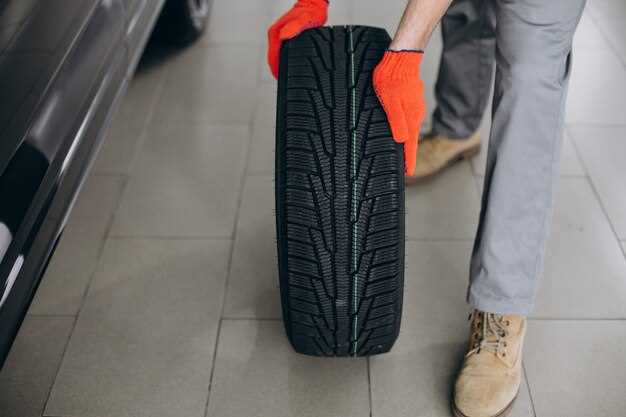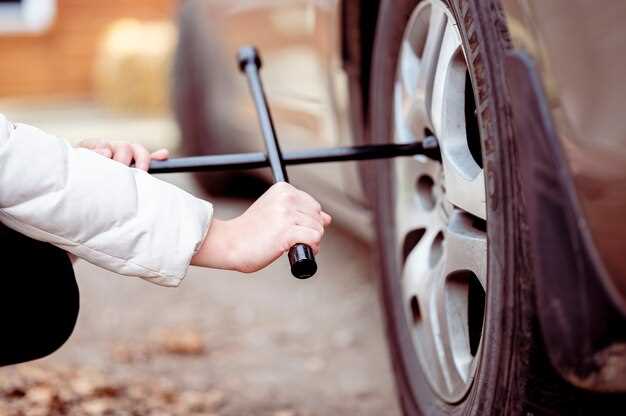How to check tire pressure and tread depth


Maintaining appropriate tire pressure and tread depth is critical for ensuring the safety and performance of your vehicle. Under-inflated or worn tires can lead to reduced traction, increased stopping distances, and a heightened risk of blowouts. Regularly checking these vital aspects of your tires can help prevent accidents and prolong their lifespan.
To assess the pressure of your tires, you will need a reliable tire pressure gauge. It’s essential to check the pressure when the tires are cold, as driving can cause them to heat up and give inaccurate readings. Consult your vehicle’s manual or the placard located on the driver’s side doorframe for the recommended pressure levels.
In addition to maintaining correct pressure, evaluating tread depth is equally important. Tread depth affects a tire’s ability to grip the road, particularly in wet conditions. A simple way to check tread depth is to use the penny test or a tread depth gauge. Ensuring your tires have adequate tread depth can significantly enhance safety and driving comfort.
Importance of Maintaining Proper Tire Pressure

Maintaining proper tire pressure is crucial for ensuring safety while driving. Properly inflated tires enhance vehicle handling, stability, and overall performance. When tires are inflated to the recommended pressure, they provide optimal contact with the road, improving traction and reducing the risk of skidding or losing control during adverse conditions.
Under-inflated tires can lead to increased rolling resistance, which negatively affects fuel efficiency. This not only results in higher fuel costs but also contributes to increased emissions. Conversely, over-inflated tires can result in a harsher ride and a higher risk of blowouts, particularly on rough surfaces. Therefore, regular checks of tire pressure are essential to maintain the balance between safety and efficiency.
Moreover, proper tire pressure significantly influences tire wear and longevity. Tires that are neither over nor under-inflated will wear evenly, allowing for better performance and extending the life of the tires. This proactive maintenance can save drivers money, as it reduces the need for frequent replacements.
In addition to personal safety, maintaining correct tire pressure plays a role in the safety of others on the road. Properly inflated tires enhance responsiveness and control, which can be critical in emergency situations. Regularly checking tire pressure is a simple yet effective way to contribute to overall road safety.
Step-by-Step Guide to Measuring Tread Depth

Measuring tire tread depth is essential for ensuring safety while driving. Proper tread depth affects traction, handling, and overall performance of your vehicle. Follow this guide to accurately measure the tread depth of your tires.
Step 1: Gather Necessary Tools
To measure tread depth, you will need a tread depth gauge. Alternatively, you can use a penny or a quarter as a makeshift measuring tool. Ensure you have a clean cloth for wiping the gauge if necessary.
Step 2: Locate the Tread Wear Indicators
Before measuring, identify the tread wear indicators on your tires. These indicators are small raised bars located between the tire grooves. They signal when it’s time to replace your tires.
Step 3: Measure the Tread Depth
If using a tread depth gauge, insert the probe into the tire groove and press down until the base of the gauge touches the tire. Read the measurement displayed on the gauge. If you’re using a penny, insert it into the tread with Lincoln’s head facing down. If you can see the top of Lincoln’s head, your tread depth is too low and the tires should be replaced.
Step 4: Check Multiple Locations
Measure the tread depth in several different locations across each tire. Tread wear can be uneven due to various factors including alignment issues or driving habits. Make note of the lowest measurement.
Step 5: Assess the Results
The minimum tread depth for safe driving is 2/32 of an inch. If your measurements are below this threshold, it is crucial to replace your tires to maintain safety on the road. Tread depth above 4/32 of an inch is generally considered safe for wet conditions.
Step 6: Regular Checks
Establish a routine for measuring tread depth at regular intervals, such as monthly or before long trips. Staying proactive about your tire maintenance will greatly enhance vehicle safety.
Signs of Unsafe Tire Conditions and When to Replace Tires
Maintaining optimal tire pressure is crucial for ensuring vehicle safety. An under-inflated tire can generate excessive heat, leading to blowouts. Conversely, over-inflation can reduce contact with the road, impairing traction. Regularly checking tire pressure helps identify these risks early. If the tire pressure frequently deviates from the recommended level, it may indicate leaks or other issues that need addressing.
Worn tread depth is another critical factor in assessing tire safety. Tires should have a tread depth of at least 2/32 of an inch. To check this, you can use the penny test by inserting a penny into the tread; if you can see the entire coin, it’s time to replace the tire. Signs of uneven wear, such as bald spots or excessive wear on one side of the tire, can also indicate alignment or suspension problems that require attention.
Visual inspection is essential. Cracks, blisters, or bulges on the tire surface signify deterioration and potential failure. Additionally, look for foreign objects embedded in the tire, which could lead to slow leaks or sudden punctures. If you experience vibrations while driving or notice unusual noises, it may suggest tire damage, necessitating immediate evaluation.
The age of the tire is another critical consideration. Tires typically have a lifespan of six to ten years, regardless of tread wear. Check the tire’s manufacture date printed on its sidewall. If your tires are nearing the end of their lifespan, even if tread depth appears sufficient, it is wise to replace them to avoid unexpected issues.
Lastly, if you frequently find yourself needing to inflate your tires or deal with recurring punctures, replacing them may be the most prudent choice. Ensuring that your tires are in good condition significantly enhances your safety on the road.



